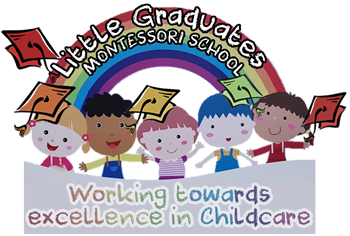We follow the Early Years Foundation Stage as laid down by the Department of Education and Skills alongside the Montessori Method of teaching. We believe that the amalgamation of the two systems produces excellent results in achieving the Early Learning Goals.
Organisation and Curriculum
About the EYFS
Organisation and Curriculum.
We follow the Early Years Foundation Stage as laid down by the Department of Education and Skills alongside the Montessori Method of teaching. We believe that the amalgamation of the two systems produces excellent results in achieving the Early Learning Goals.
.
About the EYFS
The Early Years Foundation Stage (EYFS) is taken from the statutory frame work for the Early Years Foundation Stage, September 2012
Effective practice in the EYFS is built on four guiding themes. They provide a context for the requirements and describe how practitioners should support the development, learning and care of young children. The themes are each broken down into four commitments describing how the principles can be put into practice.
.
A Unique Child recognizes that every child is a competent learner from birth who can be resilient, capable, confident and self-assured. The commitments are focused around development; inclusion; safety; and health and well-being.
.
Positive Relationships describes how children learn to be strong and independent from a base of loving and secure relationships with parents and/or a key person. The commitments are focused around respect; partnership with parents; supporting learning; and the role of the key person.
.
Enabling Environments explains that the environment plays a key role in supporting and extending children’s development and learning. The commitments are focused around observation, assessment and planning; support for every child; the learning environment; and the wider context – transitions, continuity, and multi-agency working.
.
Learning and Development recognizes that children develop and learn in different ways and at different rates, and that all areas of learning and development are equally important and inter-connected.
.
This approach ensures that the EYFS meets the overarching aim of improving outcomes and reflects that it is every child’s right to grow up safe; healthy; enjoying and achieving; making a positive contribution; and with economic well-being.
How we plan to achieve this?
The EYFS sets standards to enable us to provide a rich and individual experience for each child. We aim to provide individual learning, development and care that enhance the development of the children in our care, giving them a good start in life.
.
We aim to support each child to make progress at their own pace providing any additional support that may be necessary. We will ensure positive attitudes to diversity so that every child is included and not disadvantaged. We will include positive images so that the children will learn from an early age to value diversity in others and grow up to make a positive contribution to society. We aim to remove or provide support to overcome any barriers that may hinder a child’s development. We will be alert to early signs of difficulty and arrange additional support from other agencies if necessary for the child and their family. We aim to give all children, irrespective of ethnicity, culture or religion, home language, family background, learning difficulties or disabilities, gender or ability the opportunity to experience a challenging and enjoyable framework of learning and development.
The requirements for learning and development
All early years providers must by law deliver, regardless of type, size or funding of the setting deliver the learning and development requirements as set out in the Practice Guidance for the Early Years Foundation Stage September 2012 in a way which reflects the needs of the individual children in their care and is appropriate to their setting.
.
Children are competent learners from birth and develop and learn in a wide variety of ways.
All practitioners should, therefore, look carefully at the children in their care, consider their needs, their interests, and their stages of development and use all of this information to help plan a challenging and enjoyable experience across all the areas of Learning and Development. The Childcare Act 2006 provides for the EYFS learning and development requirements to comprise three elements:
- The early learning goals- the knowledge, skills and understanding which young children should have acquired by the end of the academic year in which they reach the age of five;
- The educational programs- the matters, skills and processes which are required to be taught to young children;
- The assessment arrangements- the arrangements for assessing young children to ascertain their achievements
There are seven areas of learning and development that must shape educational program in early year’s settings. Three areas are particularly crucial for igniting children’s curiosity and enthusiasm for learning, and for building their capacity to learn, form relationships and thrive. These three areas, the PRIME areas, are
- Personal, Social and Emotional Development;
- Communication, Language
- Physical Development
These three then interlink with these SPECIFIC areas
- Literacy
- Mathematics
- Understanding the World;
- Expressive Arts and Design
None of these areas of Learning and Development can be delivered in isolation from the others. They are equally important and depend on each other to support a rounded approach to child development. All the areas must be delivered through planned, purposeful play, with a balance of adult-led and child-initiated activities.


